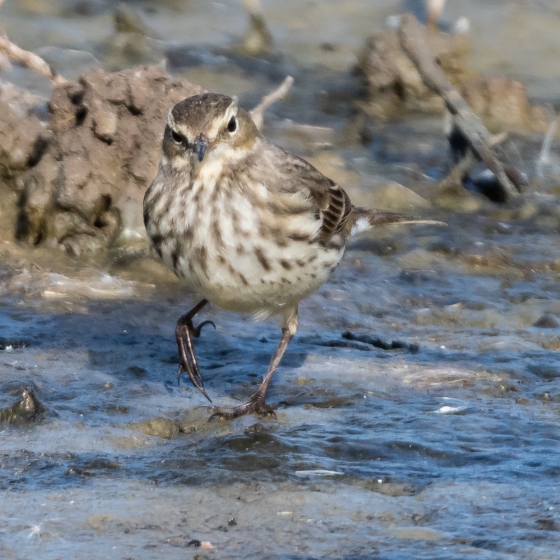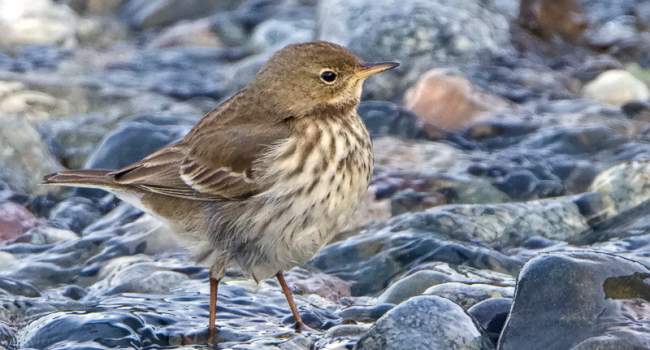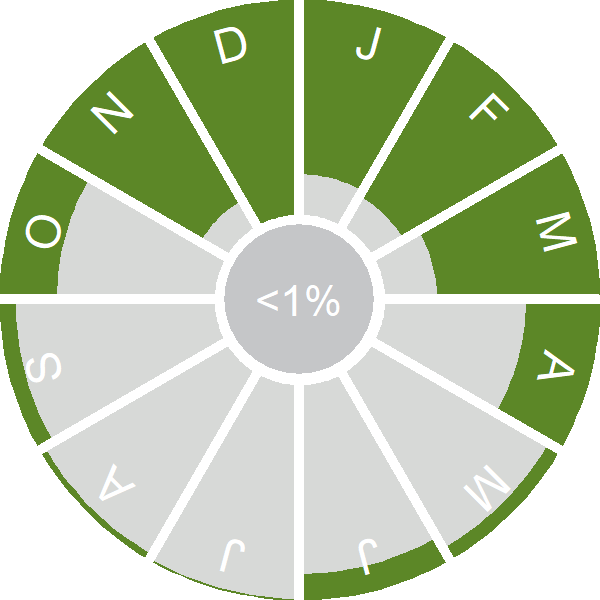Water Pipit
Anthus spinoletta (Linnaeus, 1758)
WI
 WATPI
WATPI  10141
10141

Family: Passeriformes > Motacillidae

The Alpine-breeding Water Pipit is a winter visitor to British and Irish wetlands, predominantly those found in the south. It arrives during September and October.
The Water Pipit has a curious behaviour in that part of the breeding population from the mountains of southern Europe move north for the winter. Its favoured habitat during the winter months is freshwater and coastal marshes in England – it is a scarce bird in Scotland and Wales and rare on the island of Ireland.
Water Pipits begin to head back to their breeding areas during April, by which time many are sporting their pink and grey breeding attire. It is estimated that around 300 individuals spend the winter months in Britain & Ireland, but there can be cold weather influxes.
Identification
Water Pipit identification is often difficult. The following article may help when identifying Water Pipit.
Identifying Water Pipit and Rock Pipit

This Bird ID focuses on separating the UK-resident Rock Pipit from the relatively rare Water Pipit, and both from the ubiquitous Meadow Pipit.
Once thought to be the same species, Rock Pipit and Water Pipit can now be told apart by focusing on finer plumage detail.
SONGS AND CALLS
Listen to example recordings of the main vocalisations of Water Pipit, provided by xeno-canto contributors.
Flight call
Song
Develop your bird ID skills with our training courses
Our interactive online courses are a great way to develop your bird identification skills, whether you're new to the hobby or a competent birder looking to hone your abilities.
Browse training coursesStatus and Trends
Population size and trends and patterns of distribution based on BTO surveys and atlases with data collected by BTO volunteers.
CONSERVATION STATUS
This species can be found on the following statutory and conservation listings and schedules.
DISTRIBUTION
Water Pipits are scarce winter visitors from alpine areas of southern Europe. They mostly winter in the south of Britain and Ireland with a bias towards the coast; inland records are associated with large wetlands and marshes in the larger river valleys. The highest counts were received from the English east coast between the Humber and Suffolk, and from the Fens.
Occupied 10-km squares in UK
| No. occupied in winter | 317 |
| % occupied in winter | 10 |
European Distribution Map
DISTRIBUTION CHANGE
| % change in range in winter (1981–84 to 2007–11) | +211.7% |
SEASONALITY
Water Pipit is a winter visitor, arriving mostly from late October and remaining until April.

Movement
Information about movement and migration based on online bird portals (e.g. BirdTrack), Ringing schemes and tracking studies.
An overview of year-round movements for the whole of Europe can be seen on the EuroBirdPortal viewer.
RINGING RECOVERIES
View a summary of recoveries in the Online Ringing Report.
Foreign locations of birds ringed or recovered in Britain & Ireland

Biology
Lifecycle and body size information about Water Pipit, including statistics on nesting, eggs and lifespan based on BTO ringing and nest recording data.
SURVIVAL & LONGEVITY
View number ringed each year in the Online Ringing Report
Maximum Age from Ringing 
|
4 years 9 months 15 days (set in 1965) 
|
CODES & CLASSIFICATION
Ring size 
|
A2 |
Field Codes 
|
2-letter: WI | 5-letter code: WATPI | Euring: 10141 |
For information in another language (where available) click on a linked name
Links to more studies from ConservationEvidence.com
- Evaluating the English Higher Level Stewardship scheme for farmland birds
- Breeding birds of the Buitenkaadse Oostvaardersplassen in 1997, 2002 and 2007.
- Changes in breeding success and abundance of ground-nesting moorland birds in relation to the experimental deployment of legal predator control
Read more studies about Water Pipit on Conservation Evidence >
Would you like to search for another species?









Share this page